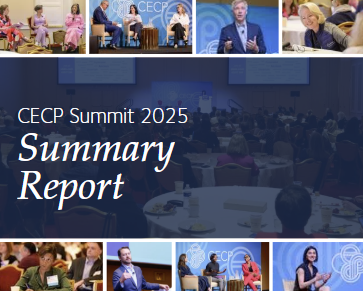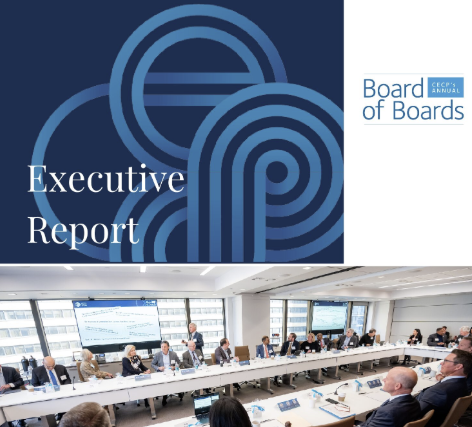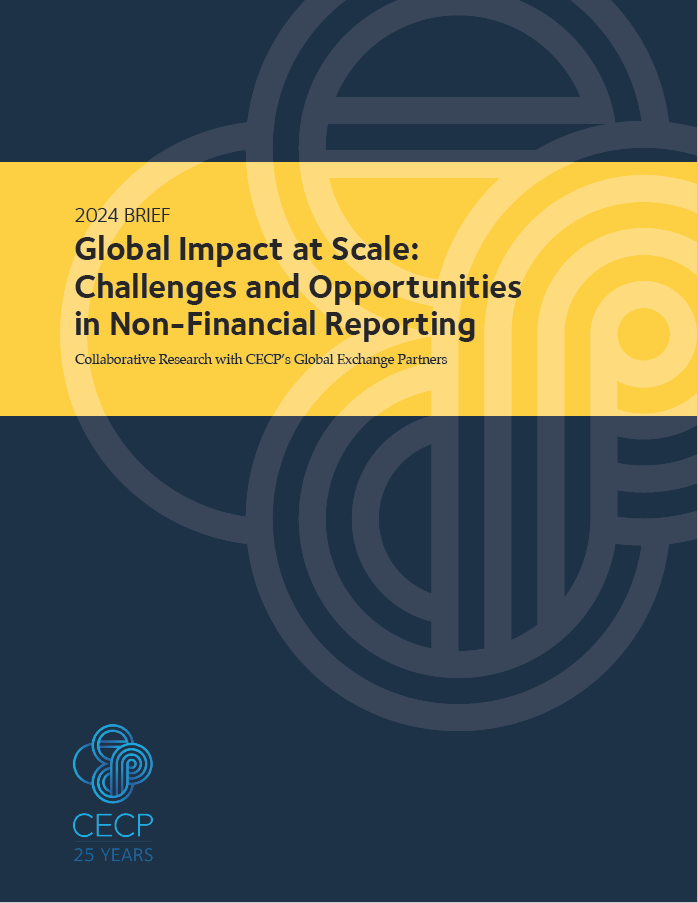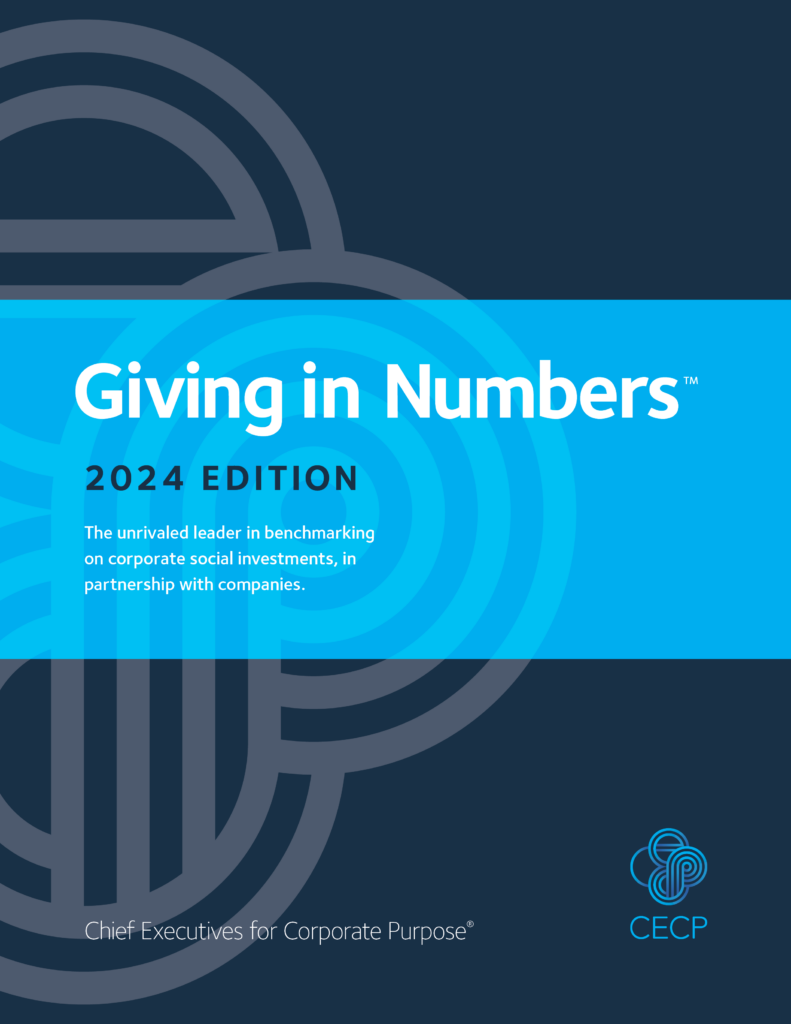Featured Insights
-
 Read More
Read More2025 CECP Summit Executive Report
May 23, 2025
The annual CECP Summit is an experience that brings together nearly 200 senior social impact, corporate responsibility, and sustainability leaders from the world’s leading global companies. Under the theme of Unleash the Power of Purpose, this vital network navigated an agenda that delivered powerful insights on trends, strategic partnerships, and how purpose powers performance in […]
-
 Read More
Read MoreCorporate Purpose: Driving Business Value
April 22, 2025
Against an ever-shifting backdrop of geopolitical, societal, and economic trends, Corporate Purpose: Driving Business Value analyzes data, highlights case studies, and provides actionable insights that corporate purpose leaders need to inform their companies’ long-term, sustainable, value creation strategies.
-
 Read More
Read More2025 Board of Board Executive Summary
February 25, 2025
CECP’s 19th Annual Board of Boards was held February 25, 2025 in NYC.CECP’s annual CEO-only, closed-door Board of Boards provides a distinct opportunity for CEOs to discuss purpose-driven leadership in today’s global climate. Attending CEOs network and share strategies to identify and advance critical issues around sustainable business, in discussion with CEO featured speakers and […]
-
 Read More
Read MoreThis “brief” highlights CSRD readiness, ESG perceptions globally, and current commonly used non-financial reporting frameworks and standards. Why is this important? Because it’s finally elevating the importance of and need for quality, assurable E and S data to that of governance and financial data.
-
 Read More
Read More2024 CEO Investor Forum Executive Summary
November 20, 2024
CECP held its twelfth CEO Investor Forum, the only platform that brings leading CEOs, CFOs, and investors together to discuss Integrated Long-Term Plans. 2024’s executives discussed AI, including material financial opportunities and risks, as well as non-financial risks, such as ethical concerns and impacts on human capital.
-
 Read More
Read MoreGiving in Numbers™
October 17, 2024
The premier industry survey and research, providing standard-setting criteria in a go-to guide that has defined the field and advanced the movement.
CECP Insights Blog
CECP's CEO Daryl Brewster, other CECP staff, members of CECP's Board of Directors, and other industry thought leaders provide timely insight into trends and developments on the role of business in society.

CECP Insights Blog
-
 Read More
Read MoreAt Cisco, giving back isn’t just something we do—it’s part of who we are. Our culture of service is deeply embedded in our identity and has become a powerful driver of employee engagement, innovation, and impact. Central to this is our 80% Blueprint, a bold initiative that transformed employee giving from a 37% participation rate to […]
-
 Read More
Read MoreTimes are changing fast. In a poll of corporate leaders in November 2024, the one to two words that described how they are feeling in the current business and sociopolitical environment were “optimistic” and “engaged”. And just last month, when polled at the CECP Summit, the sentiment shifted dramatically to words like “anxious,” “frustrated,” and […]
-
 Read More
Read MoreWhy is it crucial for businesses to step up efforts in giving and volunteering? I think members of the CECP community are already very motivated by the way we deepen ties with key stakeholders, enhance culture and employee engagement, and add tremendous impact to the community through giving and volunteering. On average, companies that offer […]
